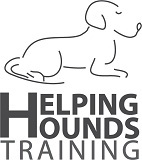Written by: Marie Collett
Dogs may growl for a variety of reasons. And as people, we may find it scary, aggravating, annoying, or even unnecessary. But when a dog growls, he always has a reason. A growl is a way in which a dog communicates to us (and other dogs) that he is uncomfortable. In addition to growling, dogs have many warning signs which may include yawning (when not sleepy), lip licking (when not eating or drinking), pacing, avoidance, cowering, dilated pupils, snarling, and snapping. These vary slightly dog to dog but if you notice more than one of these warning signs from your dog, it’s time to take action!
Many owners believe that teaching the dog not to make these fearsome noises should end the problem. However, this could not be further from the truth. The growl is his way of signaling that he is feeling threatened and may need to resort to stronger action if the threat continues but that he’d rather not. By discouraging these early warning signals we are teaching the dog not to warn us before he bites. And eventually, the dog will learn to avoid growling (and/or other warning signals) and go directly to protecting himself the only way he can, possibly resulting in an injury.
So what can we do instead? A good first step is to try and identify what has triggered his growl response. Does he seem scared or upset by children? Men in hats? A certain object? Other dogs? By identifying what is causing his reaction, you can take precautions or limit his interactions with the source of his discomfort. If you find yourself in a situation where your dog is growling, remove him (or whatever is triggering his growling) from the situation immediately and let the dog calm down. If you want to help your dog learn how to overcome his fears, contact a qualified force-free trainer in your area. (You will definitely want to make certain that the trainer uses only force-free techniques and not traditional methods, as those methods can exacerbate the situation and make matters worse.) A qualified trainer can guide you in helping the dog by teaching ways to build confidence, learn to associate whatever triggered the responses with something positive instead of something negative, and help improve the overall emotional well-being of your dog while strengthening your bond of trust with him.



